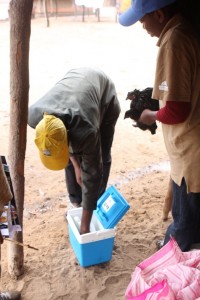Veterinary Cold Chain Manual being printed in English and French
While the human health community pays considerable attention to cold chain issues, the animal health cold chain receives much less attention. Fortunately, the Australian Centre for International Agricultural Research (ACIAR) has provided funding for KYEEMA, in collaboration with the University of Sydney, to develop and print a Cold Chain manual for veterinary vaccines in both English and French, which is now being prepared for printing.
Vaccines are a key component of animal disease prevention and control worldwide. They have a major role in protecting animal and public health, reducing animal suffering, enabling efficient production of food animals, and greatly reducing the need for antibiotics to treat food and companion animals. However, these important activities can be seriously compromised by poor vaccine storage and handling.
This manual covers aspects of storage and transport of veterinary vaccines: the equipment used, monitoring the cold chain, how to recognise and deal with breaches of the cold chain, and packing vaccines. It will support effective distribution of the I-2 Newcastle disease (ND) vaccine and will enhance local capacity to store and handle vaccines effectively, leading to better nutritional, livelihood and environmental outcomes for those living in poverty.
All countries interested in improving the storage and transport of animal vaccines, including those currently producing or wishing to produce I-2 vaccine for the control of ND in village chicken populations, will benefit from the use of this manual. The final printed and online versions will be ready for distribution in early 2016.





Leave a Reply
Want to join the discussion?Feel free to contribute!